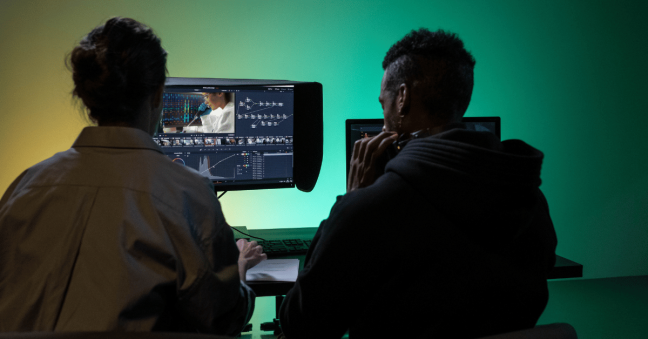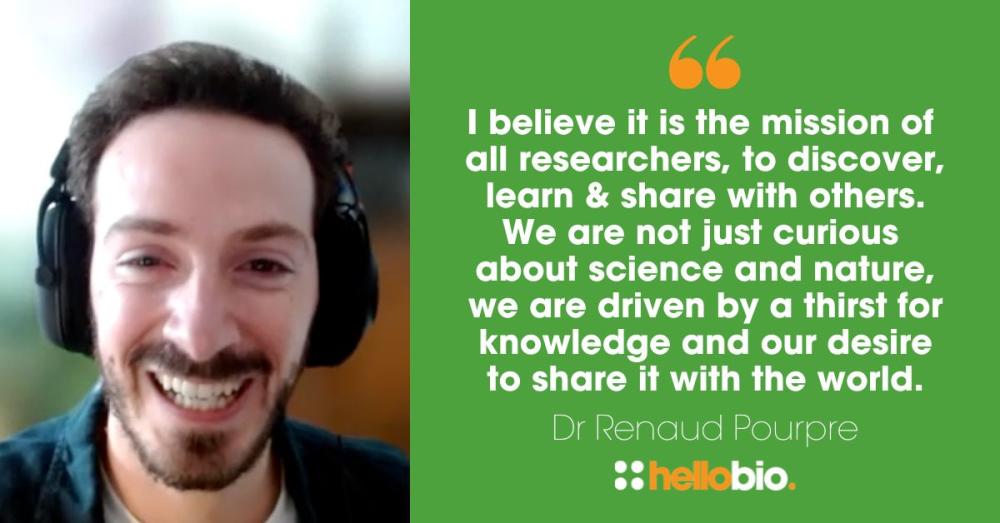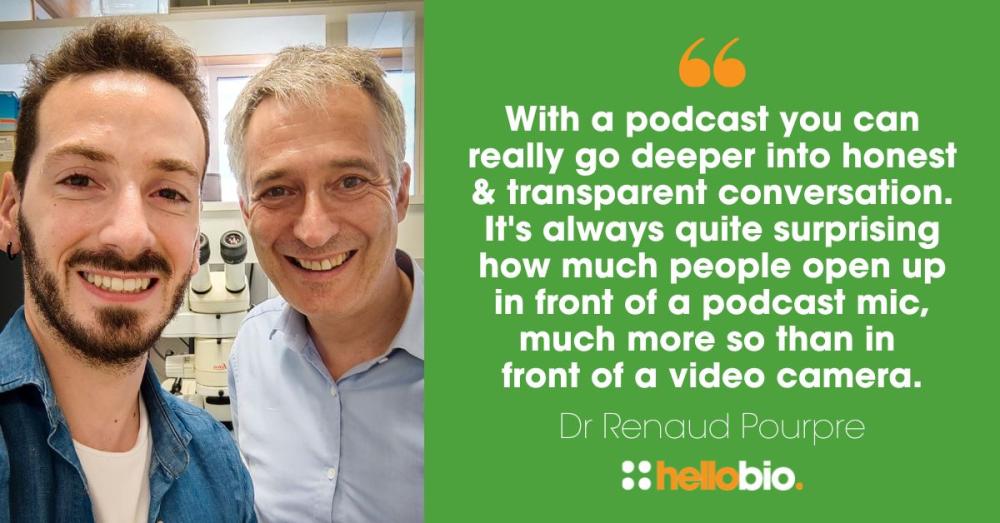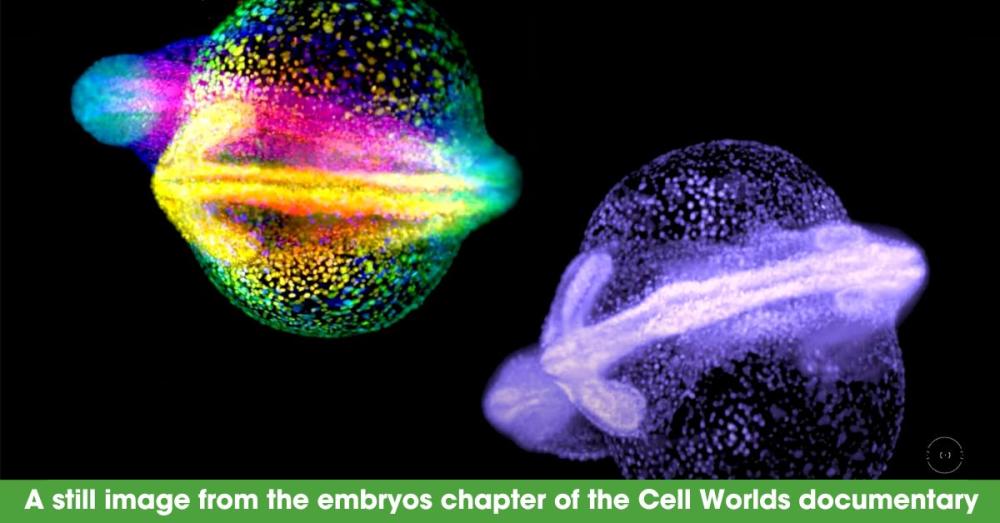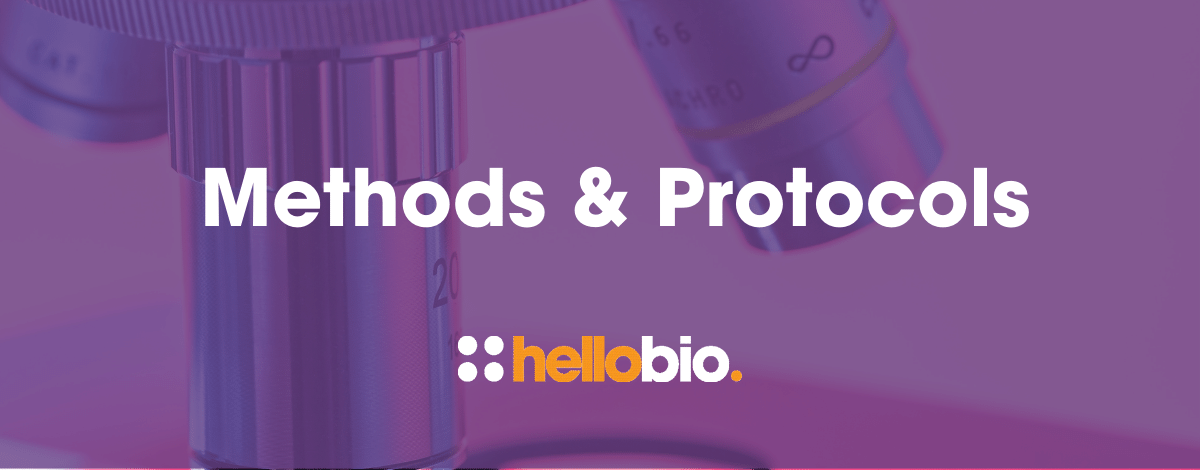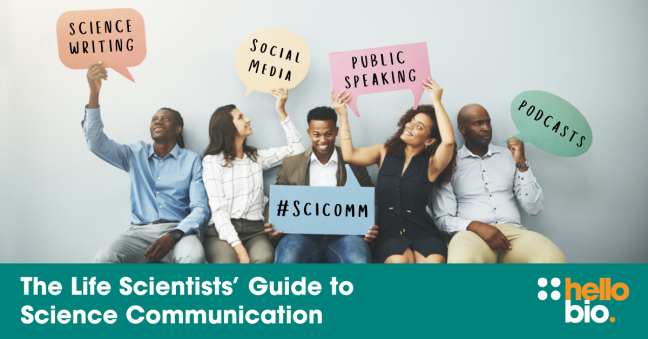Cultivating a Creative Career in Scicomm
Scicomm expert Dr. Renaud Pourpre describes himself as a ‘science storyteller’ who is passionate about sharing STEM research using innovative and creative techniques. His projects include The Lonely Pipette podcast series, the Cell Worlds audio-visual documentary, and Double-Science, a free 3-day science festival which launched in May 2023. From his early scicomm beginnings at Pint of Science to his current catalogue of exciting projects, Renaud shares his journey into creative science communication, and offers advice for those hoping to follow in his footsteps…
A mission to discover, learn & share
My interest in science communication began when I was still a researcher. From the outside, much of the work I was doing might have seemed unimportant or mundane to the general public, but I could see the potential that the many fascinating stories, knowledge and technologies developing from our work could have for society. I understood the importance of communicating this information, and I began to get involved with scicomm towards the end of my masters, and even more so during my PhD. I felt it was important to let society know what we were doing, because knowledge is key. When the public has greater knowledge about research work, they can begin to appreciate that what scientists are doing is driven by curiosity, and that there is justification for the money spent on science research.
I believe it is the mission of all researchers, to discover, learn and share with others. We are not just curious about science and nature, we are driven by a thirst for knowledge and our desire to share it with the world. For me, science communication is my chance to take what I’ve learned inside the lab and share it with those on the outside.
The start of my scicomm journey
My first step into scicomm was to apply for a video-making contest for students. It wasn’t a specific scicomm project, it was more about communicating research in general, but I decided to take a GoPro camera and stick it to my head to record a first-person view of 72 hours in a science lab! I think my colleagues thought I was weird and wondered what on earth I was doing, but my aim was to put together a short video to show people a typical day inside a lab and give them an insight into the life of a scientist. My intention was not to share the heavy details of the data or the experiments, rather to show the lighter, more fun side of science - like the amount of coffee and tea we all drink!
I realised that there were different ways of making connections with people, and sharing richer research that wasn’t like a traditional science lesson. I found that through the video project people were willing to ask more questions about my work, and this was my first step into creative science communication. I then got involved in the Pint of Science Festival, and this was my next step into scicomm. I started making more videos, then moved into podcasts and have just kept going from there.
Earliest influences
Growing up in France, in the landscape of science communication, we had a TV show called ‘C'est pas sorcier’ (It’s not rocket science) with Jamy Gourmaud, Frédéric Courant and Sabine Quindou. They would communicate science topics through studio discussions and interviews with researchers, and they really built the foundations of scicomm culture here in France. They were very popular and quite inspiring. Not only did the show get the viewing public interested in a variety of STEM topics, it also inspired many to pursue careers in science. They would discuss genetics, biology, physics and mathematics, using cool and interesting stories which as a child I found very inspiring, and it made me realise that the world of science was somewhere I might want to work.
Making connections
As my scicomm career began to take shape, I started to see a shift in the way we look at science communication. There are a number of traditional methods, such as the ‘knowledge deficit model’ which assumes that the public have no knowledge at all about the subject you are communicating, and the more information we can provide them with, the better prepared they will be to make decisions. But scientists are now challenging this model as it seems that more knowledge does not necessarily mean more engagement. Alternative models are delivering similar if not better results.
A model of scicomm that I have worked with most is the ‘curiosity deficit model’. Instead of trying to fill people with lots of heavy data, we should be trying to make them connect with the topic in question. If we raise sufficient curiosity and wonder, it can create a spark which will trigger more STEM-based conversations with family, friends, and amongst society in general. We’re not trying to make them into experts, but if we can at least get them curious about the topic enough to share their thoughts with others, there will be more conversation about science which is always a win. This method is something I use now in my video-making, and I believe it has a much better impact than trying to teach the public all the fine details about science.
Creative collaborations
Since the beginning of my scicomm career, most of the projects that I've worked on have been in collaboration with others. For the Lonely Pipette podcast I’m working with Jonathan Weitzman (pictured alongside me below), and for the Cell Worlds project, I worked with a composer, another science communicator, and a team of scientists. I believe that finding people who share your vision, your values, and your methods of communicating your science, and doing it collaboratively is a great way to get started. You will feel supported, you will have more creativity, and you will have complimentary skills and approaches which could help to take your scicomm projects further, faster.
The popularity of podcasts
As a scientist and as a former researcher, the best thing I find about podcasts is that you can listen to them anywhere, any time! A podcast is hands-free and requires less attention than a video. You can listen to inspiring conversations, learn about yourself, learn about the world, all while you’re doing something else. Scientists are busy people, but lab work can often be repetitive so a podcast offers a way to turn less exciting tasks into learning opportunities. Also, with a podcast you can really go deeper into honest and transparent conversation. It's always quite surprising how much people open up in front of a podcast mic, much more so than in front of a video camera.
Bringing audio-visual ideas to life
Cell Worlds was a big audio-visual project that we launched in February 2022. It's an art and science project where the viewers can discover themselves through a journey into the microscopic universe. It was designed to bring not only knowledge, but to provide insight and popularise science in a more unusual way. Everything in the project is based on microscopic images which are set to music. Terence Saulnier, who is a former researcher and neuroscientist, and I worked with a composer, Youenn Lerb, to help bring microscopy to new audiences.
We really wanted to share and raise awareness about ourselves and our biology through wonder and curiosity. This was our mission, and the music was a good way to add a lot more emotion in order to engage the viewers. It is a synergetic way to share information, so rather than producing a traditional documentary, we created something much more immersive. Instead of being in the middle of a jungle, studying the species in front of you, you're actually in the middle of your own body, you're seeing the cells inside you that have different behaviours, and you discover how they interact and why they are important for our biology.
The project is a video documentary, but there was also a public exhibition in France, and this museum show was complementary to the documentary, another unusual way to communicate science. The documentary is available to watch on YouTube for free here. We expanded the project into a ‘cinema experience’, creating a unique show where audiences will discover science through a concert, a documentary, and exchanges with researchers. We are now working with an orchestra to bring this show to the next level.
The future of scicomm
As scientists we strive for robust data that is unaffected by emotion, but often our reason for doing the science is driven by our feelings and values. Research can be driven by anger or injustice, or by empathy and the need to find solutions for pain and suffering. I truly believe that if we share these emotions through science communication, we will make better connections with our audiences, and show the public that researchers are human, and that science can be relatable in ways they might never have considered. Science is everywhere and we can all be connected to it through our emotions.
---------
About the author
Connect with Dr. Renaud Pourpre:
- LinkedIn: Renaud Pourpre, PhD
- Twitter: @LePourpre
- Instagram: @renaud_po
Listen to The Lonely Pipette podcast: https://thelonelypipette.buzzsprout.com/share
Watch the Cell Worlds documentary: https://youtu.be/TR3tXKHE6-A?si=RWG8fpuOtik_VazU
This article was based on a video interview with Renaud Pourpre for our YouTube channel. You can watch the full video here: https://www.youtube.com/watch?v=10TBs6RY9cs&t=596s
---------
More on science communication from Hello Bio
For more on the importance of scicomm, and advice on how to get involved, check out these other great resources on the Hello Bio blog:
- The Life Scientists' Guide to Science Communication - information and advice from scicomm experts
- The Importance of Science Communication - guest blog by Dr Chinmaya Sadangi
- Improving public understanding of science - guest blog by Mann Virdie & Ella Courtie
- Improving Your Science Communication Skills - interview with the founders of Science Talk
_________________________________________________
If you enjoyed this article, why not check out the other resources available on our blog. We are passionate about supporting life scientists including early career life scientists and PhD students - with really low-priced reagents, antibodies and biochemicals, early career scientist grants, and resources to help with both personal and professional development. We know how tough it is - so we hope you find these helpful!
More General Support for Life Scientists
For advice on wellbeing, dissertations, presenting at conferences, wellbeing, PhD support, networking and lots more, we have a huge range of articles to help - just click below:
Save up to 50% on our high purity reagents...
When you get to the stage of planning your experiments, don't forget that we offer a range of low-cost, high-purity agonists, antagonists, inhibitors, activators, antibodies and fluorescent tools (yes - they really are around half the price of other suppliers!) You can use our Quick Multi-Search Tool to search for lots of products in one go, and the range includes:
- Enzyme inhibitors and activators
- Chemogenetic ligands
- Ion channel modulators
- GPCR & ionotropic receptor ligands
- Cell biology reagents & biochemicals
Technical resources
Try our Molarity Calculator: a quick and easy way to calculate the mass, volume or concentration required for making a solution.
Try our Dilution Calculator: an easy way to work out how to dilute stock solutions of known concentrations
We also offer a comprehensive range of technical resources including antibody protocols and methods, product guides and mini-reviews:
And finally, don't forget to check back in with our blog regularly for our latest articles. If there’s something you’d love to contribute to the community, whether that’s an interview or article, drop us a line at hello@hellobio.com
---





